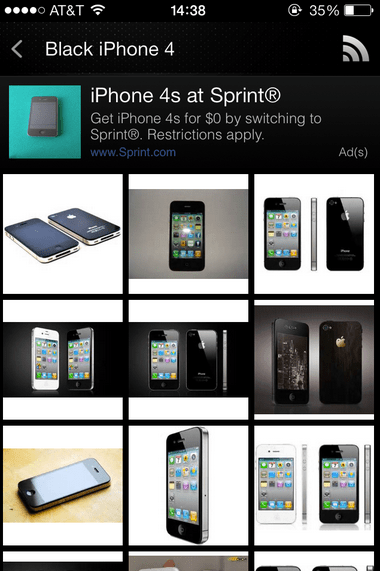
CamFind, the visual search app that wants to be a faster and more accurate alternative to Google Goggles, recently hit two milestones. Its iOS app just crossed a total of one million downloads (an Android version will be released in two months) and its API is now available for other developers to download on Mashape.
The app’s creators, Dominik Mazur and Bradford Folkens, say they made CamFind’s API available in response to requests from other developers who wanted an image recognition back-end for their apps. Many developers want to use CamFind’s search technology for shopping comparison services, but there are many other possible use cases. For example, students have used CamFind on field trips to identify and learn about plants. The app reads search results out loud, so travelers take a picture of an item and learn what it is called in different languages. You can take a picture of a restaurant’s sign to pull up Yelp reviews and photos of its dishes. Mazur and Folkens are also excited about developers using CamFind’s API to create apps for wearable tech like Google Glass.
The duo’s startup, Image Searcher, Inc., currently has two apps available for download: CamFind and TapTapSee, which is made for visually-impaired people. CamFind and TapTapSee have processed 6 million search requests and 2.5 million search requests, respectively.
Image Searcher, Inc. was founded in 2011 after Mazur and Folkens, who met while studying computer science and mathematics at the University of Illinois Urbana-Champaign, decided to embark on their first venture capital funded startup (their first startup, which they ran for 10 years, was called Net Ideas). They decided to work on mobile visual search products in order to leverage their search experience and because they believed they could build a better alternative to Google Goggles.
CamFind combines proprietary image recognition technology with a team of people in the Philippines who tag images with keywords to achieve what the founders claim is a 90% accuracy rate. Crowdsourcing image tags identifies the 80% of images that algorithms can’t recognize and is the key to CamFind’s success, says Mazur.
“As more people take more pictures, the technology only gets better,” says Mazur. “State-of-the-art technology for computer visual searches alone is still only good at recognizing 20% of the objects you get. We can answer 95 out of 100 images taken, so we’re still very far ahead.”
I tested CamFind and Google Goggle to compare them for speed and accuracy. I found CamFind sometimes takes up to 8 seconds to identify an object and produce results. Unlike Google Goggles, however, the app almost always comes back with accurate answers. Google Goggles frequently told me it didn’t recognize my target even with a clear photo.
Users spend an average of one minute and 33 seconds per session on CamFind, during which they visit about five screens. The app monetizes through contextual advertising through Yahoo, PriceGrabber.com and Shopping.com. The app became profitable three months after launching on April 7, say Mazur and Folkens. CamFind’s cost-per-query is about 1.5 cents and it currently makes up to 3 cents per search by serving up results that focus on price comparison.
“We knew that in order for this to be profitable, we can’t just have generic banner ads and display ads. We had to be relevant and related to the picture taken. If someone takes a picture of a Sony DVD player at Wal-mart, they probably want to see if they can find it cheaper online,” says Mazur.
Image Searcher, Inc. released TapTapSee first in March 2013, gaining users for the app by meeting with organizations like the Braille Institute. A Kickstarter project was launched for CamFind before its launch in April to help it gain publicity against search giants like Google, Bing and Yahoo.
Mazur and Folkens have been working on search engines since they first met in college 12 years ago. The first product they built was as Java class finder called JRank, which was built as a tool for Web developers that wanted to use an HTML code to embed a search box on their site. Future plans for Image Searcher, Inc. include making CamFind more social by integrating it with social networking platforms and letting users give permission for their queries to appear in a stream of trending searches. Image Searcher, Inc. has already landed $1.7 million in seed funding from 16 angel investors and is currently looking to raise a $5 million Series A fund.
via TechCrunch http://feedproxy.google.com/~r/Techcrunch/~3/lDAQusxWjRY/




0 comments:
Post a Comment